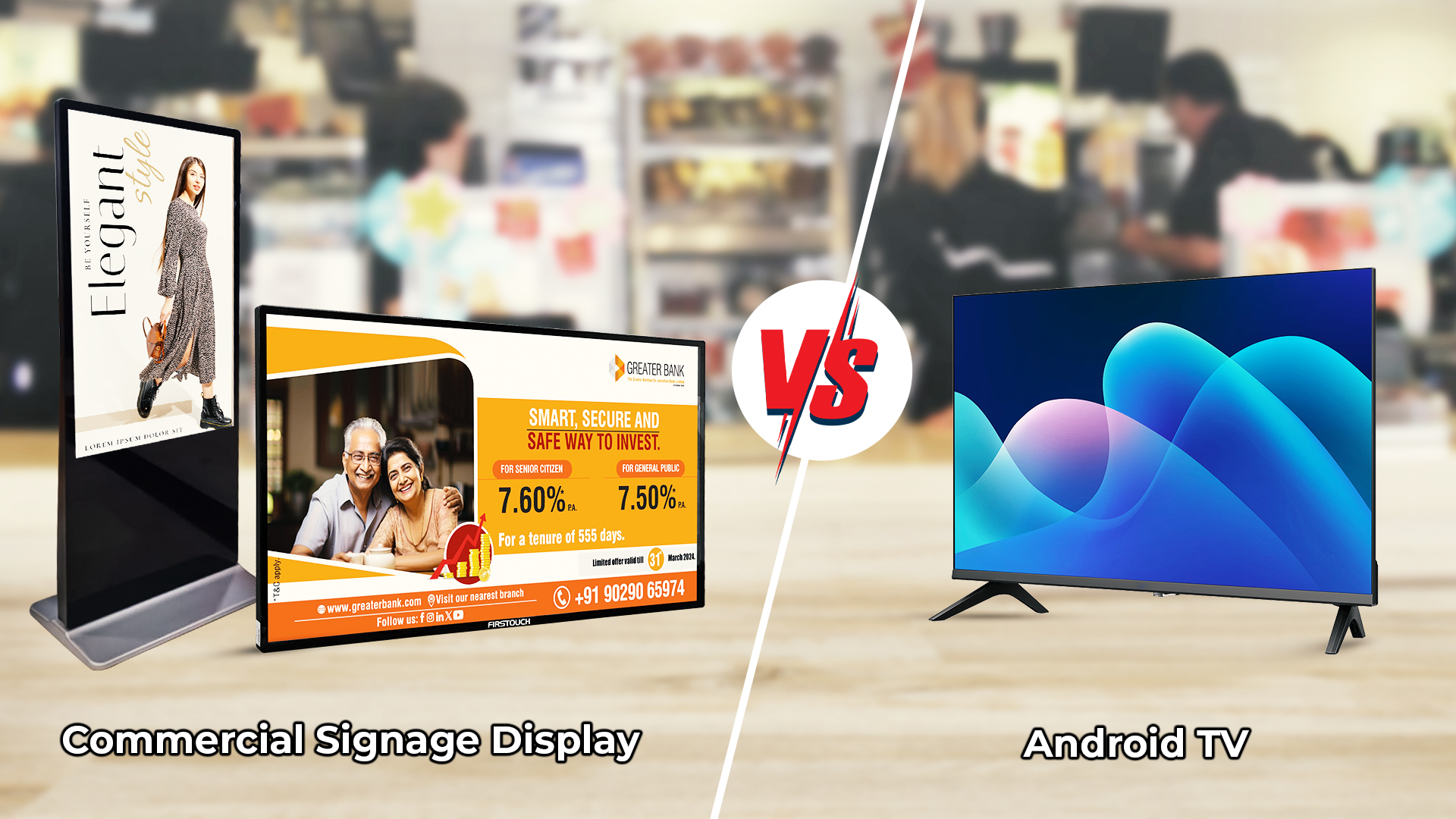
Blog
Read what's happening in FirstouchKiosk | Keep update yourself about best digital signage solution & technology. Learn how digital signage / digital kiosk / digital notice board and digital standees can help in your business growth.

Digital signage displays are specialized screens designed for businesses to grab attention and deliver specific information effectively. Unlike consumer TVs, they are optimized for advertising and informational purposes rather than entertainment. These displays offer superior performance and functionality tailored for commercial use, making them distinct from standard TVs. While online efforts are crucial, businesses should not overlook the importance of on-location advertising and experiences. Digital signage provides a powerful advertising medium alongside online marketing and social media efforts. When considering advertising options, both TV and digital signage stand out as effective methods for reaching and engaging audiences.
Durability: Commercial displays are built tougher with features like metal casings and anti-glare glass, ideal for public spaces. Android TVs are made for home use and may be more susceptible to such harsh weather conditions, dust, and other external damage.
Runtime: Commercial grade signage displays are designed for continuous operation (24/7), while TVs are meant for shorter viewing times designed to run intermittently for six to eight hours . Using a TV for extended periods can lead to overheating and screen burn-in.(A screen burn is a permanent discoloration of the screen that makes the media playing appear blurred)
Software: Digital signage displays often require separate digital signage software for creating and scheduling content. While some Android TVs can connect to signage apps, it’s not their primary function.
Features: Signage software allows for features like playlists, remote updates, and content control. Android TVs are focused on entertainment apps and may not offer these options.
Brightness: Commercial displays are much brighter than TVs, making them easier to see in well-lit areas like stores or lobbies. TVs prioritize picture quality over brightness.Commercial display is likely to be 10x brighter than an ordinary television screen.
Anti-Burn: Signage displays have features to prevent image retention (burn-in) which can occur when static images are displayed for long periods. This is less of a concern for TVs with varied content.
Commercial digital signage screens offer a wide range of inputs, such as multiple HDMI & USB ports, VGA (Video Graphics Arrays), DVI (digital visual interface), and RS-232 inputs. Such a wide variety of input systems allow greater flexibility in running the content.
For example, multiple commercial screens can be connected via these ports to show content in a large format or a Custom Integrated Audio/Video (A/V) system.
While televisions are restricted to landscape orientation, meaning they’re designed to be viewed horizontally, digital displays offer a superior degree of versatility. They can effortlessly accommodate both landscape and portrait orientations, allowing for adaptable installation in various environments.
Digital signage displays are ideal for crafting customized content loops showcasing promotions, menus, or targeted messages. Their high brightness cuts through ambient light, grabbing attention in high-traffic areas. Additionally, digital signage software allows for remote content updates, ensuring fresh information for your audience while TVs are limited to pre-recorded content or cable channels, offering less control over messaging and its not designed for 24/7 operation, leading to higher maintenance and replacement costs.
In short, for long-term, cost-effective communication with a captive audience, digital signage displays reigns supreme. Firstouch commercial-grade digital signage displays are designed for professional use with features for continuous operation, content management, and clear visibility. Android TVs are better suited for home entertainment with a focus on ease of use and entertainment apps.
BACK TO BLOG
we are always happy to help in ways that we can.